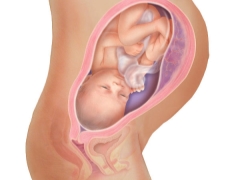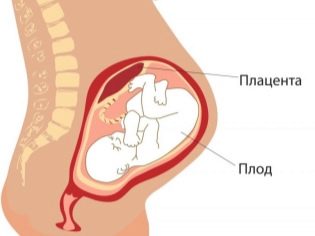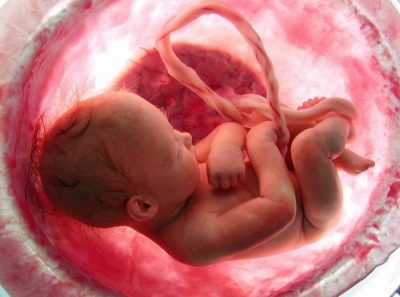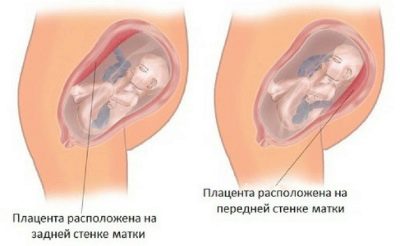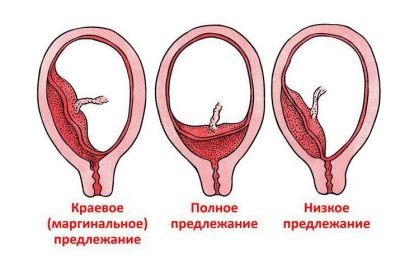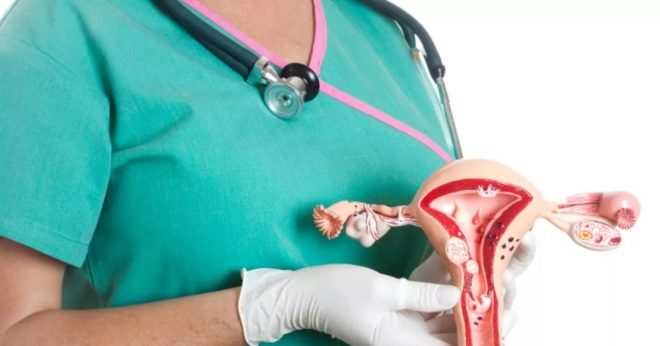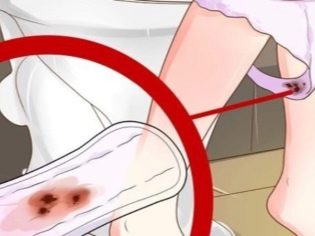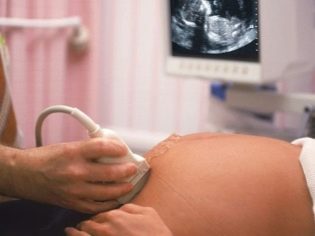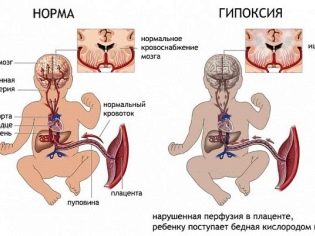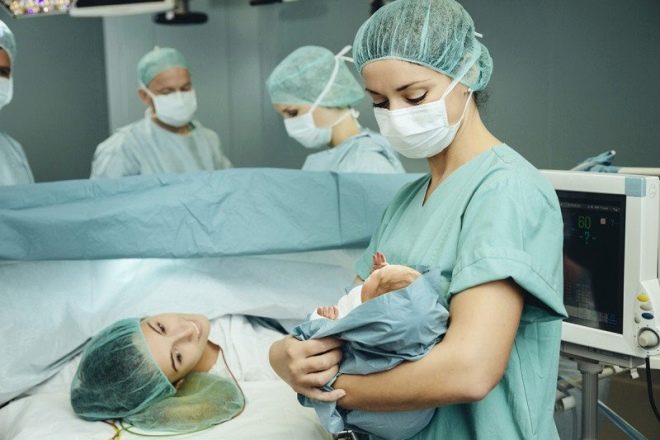What does placental presentation on the anterior wall of the uterus mean and what does it affect?
Without the normal functioning of the placenta, it is impossible to imagine the full growth and development of the baby. This article will help you understand what the placenta prevailing on the anterior wall of the uterus means and what it affects.
What it is?
To ensure the life of the chorion, and in the future, and the fetus necessarily require full blood flow. The baby can get all the nutrients and oxygen through the uteroplacental artery system. They pass through the placenta in large numbers, ensuring the growth and development of the fetus.
The main function, which is laid by nature in placental tissue, is to provide the fetus with nutritional components, as well as its protection from external influences. The intrauterine development of the fetus depends on how the placenta is located. At a certain period of pregnancy, the movement of the fetus will help determine the growth rate of the fetus.
The intensity of the intrauterine development of the baby depends on how the placenta is attached. Attachment of placental tissue is determined, in fact, from the first weeks of pregnancy. The location of the implantation of a fertilized egg affects where the placental tissue will be located.
The placenta is most often located on the back of the uterus in the area of its bottom. In some cases, it can be located in the side walls either right or left. If there is a lot of placental tissue, then it can be attached at once to several uterine walls.
This physiological location of the placenta is explained quite simply. Blood supply in the area of the uterus and its posterior wall is quite well expressed. This helps the fetus to grow quickly and intensively.
Obstetricians and gynecologists note that in some cases the placenta can be attached to the front wall of the uterus. It should be noted that this occurs much less frequently.
Normal attachment of the placenta on the back wall due to nature is not accidental. Such an arrangement is more beneficial for fetal development.
Placental tissue can be attached in different parts of the uterus. So, most often it is attached in the bottom area. However, under certain conditions, the insertion of placental tissue occurs below - in the region of the lower segment of the uterus. Too low location of the placental tissue is fraught with the development of its presentation.
Doctors consider the pathology of the placenta to be pathology when the placental tissue is in close proximity to the internal uterus. Normally, there is a certain distance between them. So, in the 2nd trimester, the placental tissue is normally higher than the internal pharynx by 5 cm. If this distance is significantly reduced, then this pathological condition is called previa.
Doctors distinguish several clinical variants of placental tissue presentation. So, placenta previa can be central, marginal or lateral. Different clinical variants of this pathology are caused by the placental tissue attached to which wall.
Why is this happening?
The attachment of the placenta to the anterior wall of the uterus is due to the very early stages of pregnancy. It happens quite simply. Fertilized egg for some reason can not attach to the bottom of the uterus and begins to fall below. So it goes down almost to the internal pharynx, where its implantation takes place.
Various gynecological diseases can contribute to the development of anterior presentation of the placenta. Chronic inflammation that occurs in the reproductive organs of a woman leads to their damage. In this case, the mucous membrane lining the inner surface of the uterus changes. Such changes and contribute to the fact that a fertilized egg can be attached in the lower sections.
The placenta can be attached to the anterior wall of the uterus even if the woman has undergone a series of gynecological operations. Thus, scraping or the consequences of surgical abortions can contribute to the development of this type of presentation.
Doctors note that the risk of placenta prevalence is slightly higher in multiparous women. If at the same time a woman has a burdened obstetric and gynecological history, then the probability of anterior presentation of placental tissue increases several times.
Various congenital abnormalities of the reproductive organs can also contribute to the development of this pathology. Placenta previa can occur in women with uterine hypoplasia. Anatomical defects in the structure of the uterus can also contribute to the development of this pathology.
Features of this location
Attachment of placental tissue on the front wall is less physiological. Such an arrangement of placental tissue has both minuses and advantages. The benefits are much less than the minuses.
It should also be noted that such a clinical situation requires a certain medical approach. For a pregnant woman who has such an arrangement of the placenta, rather careful supervision by doctors is required.
pros
The advantages of anterior placenta previa include the possibility of migration. During several months of waiting for a baby to be born, placental tissue can change its position. Doctors note that placental tissue with anterior previa placenta is much easier to shift than the posterior.
Minuses
It is noted that the placenta is extremely rarely attached to the anterior wall of the uterus. This feature is of great biological importance. This is explained quite simply. Placental tissue is very delicate. It can be easily damaged due to various external traumatic effects.
The location of the placenta on the anterior wall of the uterus can be dangerous development of its detachment. In this case, abdominal injuries can contribute to the development of dangerous uterine bleeding. If it is too intense, then in such a situation an acute oxygen starvation of the fetus can develop, which means that there will be a strong threat to the life of the baby.
Is migration of the placenta possible?
Migration is the change in the original location of the placenta. Experts believe that a change in the localization of placental tissue with prevalence on the front wall is possible. This is usually warned pregnant women and doctors when referring to them for advice.
When detecting placenta prevailing in the front wall in early pregnancy, the expectant mother should not panic first of all. Before the onset of labor is still quite far away. During this time, the placental tissue can shift and even significantly change its position.
Such changes are evaluated through ultrasound. As a rule, physicians prescribe several consecutive ultrasound examinations to track the dynamics. With the presentation of placental tissue, vaginal examinations are often not necessary. The lower is the placenta, the higher the likelihood of damage.Tracking the dynamics of the location of the placental tissue with previa is very important. It helps doctors to identify developing complications in a timely manner and take the necessary measures to improve the situation.
It should be noted that in most cases the placental tissue changes its position rather slowly. Optimally, if this process will occur in the female body within 6-10 weeks. In this case, the likelihood that the expectant mother will have any pronounced discomfort symptoms is rather low. Usually, the migration of placental tissue is completely completed by the middle of the third trimester of pregnancy.
In case the placental tissue is displaced too quickly for some reason, adverse symptoms may occur. The most dangerous of them are the development of bleeding and detachment of placental tissue from the uterine wall. As a rule, adverse symptoms develop if migration of the placenta occurs within 1–2 weeks. The rate of migration of the placenta depends on many factors and reasons, including how high the placental tissue was originally located.
Effects
When pregnancy occurs with the development of anterior placenta previa, various surprises can be expected. Usually adverse symptoms begin to develop from the 2nd trimester of pregnancy. The course of the 3rd trimester can also be complicated by the development of a number of pathologies.
Expectant mothers should remember that presence of placenta previa is not a sentence for the birth of a healthy baby. This pathology has already encountered quite a few women who have given birth to their long-awaited healthy babies.
It is important to remember that such a “special” pregnancy requires only a more attentive attitude of the future mother to her health, as well as close monitoring of the course of intrauterine development of the fetus by specialists.
With a low location of the placenta and its presentation of the most dangerous complication is, perhaps, the development of bleeding. If it is strong enough, it does not go unnoticed. In this situation, the woman notices the appearance of blood from the genital tract. The severity of bleeding can be different, the color of blood varies from bright red to dark brown. In this situation, the main thing is to remember that when such bleeding occurs, women with placenta previa should immediately consult an obstetrician-gynecologist.
Placental abruption is another complication that can develop during such a pregnancy. The severity of the resulting disturbances in this case depends largely on how much the placenta has exfoliated from the uterine wall.
If this area is small, then it is possible to identify the detachment only through ultrasound. In this case, the woman may not even appear bleeding from the genital tract, or they will be so insignificant that they will be ignored.
If the placental tissue is exfoliated strongly enough, then in such a situation it is already possible to suspect this condition by the clinical symptoms. So, the expectant mother begins to feel pretty bad. She has a strong weakness, can develop pain in the abdomen, as well as bloody discharge from the genital tract.
Severe detachment of the placenta is also dangerous and violation of the general condition of the fetus. Violation of oxygen leads to the fact that the fetus begins to experience hypoxia - oxygen starvation. Such a situation, as a rule, contributes to the fact that the clinical indicators of the fetus change. So, his heart rate and motor activity change significantly.
With the development of a strong placental abruption, a pregnant woman should be urgently hospitalized. The further algorithm of medical actions will largely depend on how long the pregnancy is.
If the threat to the life of the mother or fetus is too high, doctors will be forced to resort to emergency delivery. It is held for health reasons.
How is the birth?
The choice of tactics of obstetric aid with placenta previa is usually quite responsible. The life and health of the future mother and her baby depend on it.
It should be noted that nowadays, obstetrician-gynecologists increasingly prefer their surgical method of delivery, choosing a caesarean section. In this situation, the risk of birth trauma and damage is much lower. Of course, cesarean section has certain disadvantages, as it is in fact a surgical operation.
However, with the presentation of the placenta an important role is the preservation of the life of the baby. Reviews of many women who have placenta previa on the front wall of the uterus and have become mothers, confirm that they had a cesarean section.
The presence of a burdened obstetric and gynecological history in a pregnant woman is also an additional condition for a cesarean section. Independent natural childbirth in this case can be dangerous not only by the development of a number of pathologies for the baby, but also by a significant deterioration in the health of the expectant mother.
Tactics of obstetric aid is chosen individually. For this specialist assesses several factors. Obstetricians and gynecologists necessarily take into account the age of a woman, the presence of concomitant diseases, the clinical indicators of fetal development, the presence of formed pathologies during pregnancy and much more.
It is important to remember that during pregnancy, which proceeds with the development of placenta previa on the anterior wall of the uterus, the expectant mother from the first days after the establishment of such a diagnosis should carefully monitor their health.
In the event of adverse symptoms, it is extremely important not to postpone a visit to your obstetrician-gynecologist to clarify the situation.
See the following video on what placenta presentation means.
